The picture above shows the newly discovered dry lakes in the highlands of Mars. The deep canyon is located above the lakes and once flowed to the North. The area that was once full of liquid is colored black in this photograph.
Click on image for full size
R. P. Irwin III and G. A. Franz, National Air and Space Museum, Smithsonian Institution
Newly Discovered Martian Lakes and Canyon!
News story originally written on July 2, 2002
Geologists from the Smithsonian National Air and Space Museum in Washington, D.C. have found empty lakes and a river in the highlands of Mars. They don't contain any water, but they may indicate that the cold, desert-like planet once had a very different climate that allowed liquid water to flow at its surface.
The research team has identified a large, dry lake that once filled several impact craters. The large lake is 1400 miles long and is about the size of the U.S. states Texas and New Mexico. Two smaller dry lakes were found in the region as well.
They also identified a flood channel that connects to, and leads away from, the giant lake called Ma'adim Vallis that has carved more deeply into the Martian rock than the Grand Canyon has carved into rocks on Earth.
These new discoveries may indicate that Mars was once a warmer and wetter place than it is now, with water flowing at the surface. If life did exist on Mars before the climate changed to be colder and drier, the research team recommends that the best place to look for evidence of that life would be in the sediments and rocks that lie at the bottom of the ancient lakes because this is where fossils would most likely be preserved.
Last modified August 6, 2002 by Lisa Gardiner.
You might also be interested in:
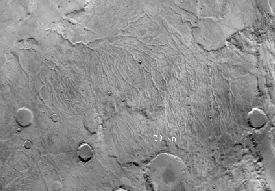
This page is the start of the tour which explores water on Mars. Use the navigation button at the top of the page to move through the tour. To go to the next page, just press the forward link on the navigation
...more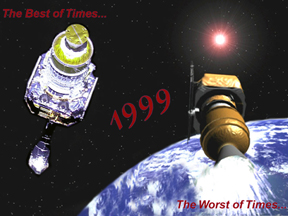
It was another exciting and frustrating year for the space science program. It seemed that every step forward led to one backwards. Either way, NASA led the way to a great century of discovery. Unfortunately,
...more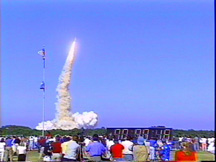
The Space Shuttle Discovery lifted off from Kennedy Space Center at 2:19 p.m. EST, October 29th. The sky was clear and the weather was great as Discovery took 8 1/2 minutes to reach orbit for the Unitied
...more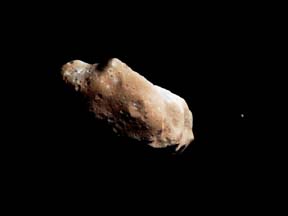
A moon was discovered orbiting the asteroid, Eugenia. This is only the second time in history that a satellite has been seen circling an asteroid. A special mirror allowed scientists to find the moon
...more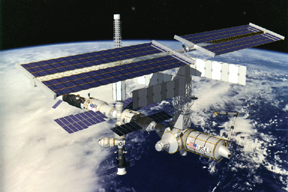
Will Russia ever put the service module for the International Space Station in space? NASA officials are demanding an answer from the Russian government. The necessary service module is currently waiting
...more
During a period of about two days in early May, 1998, the ACE spacecraft was immersed in plasma associated with a coronal mass ejection (CME). The SWICS instrument on ACE, which determines unambiguously
...more
J.S. Maini of the Canadian Forest Service has referred to forests as the "heart and lungs of the world." Forests reduce soil erosion, maintain water quality, contribute to atmospheric humidity and cloud
...more















